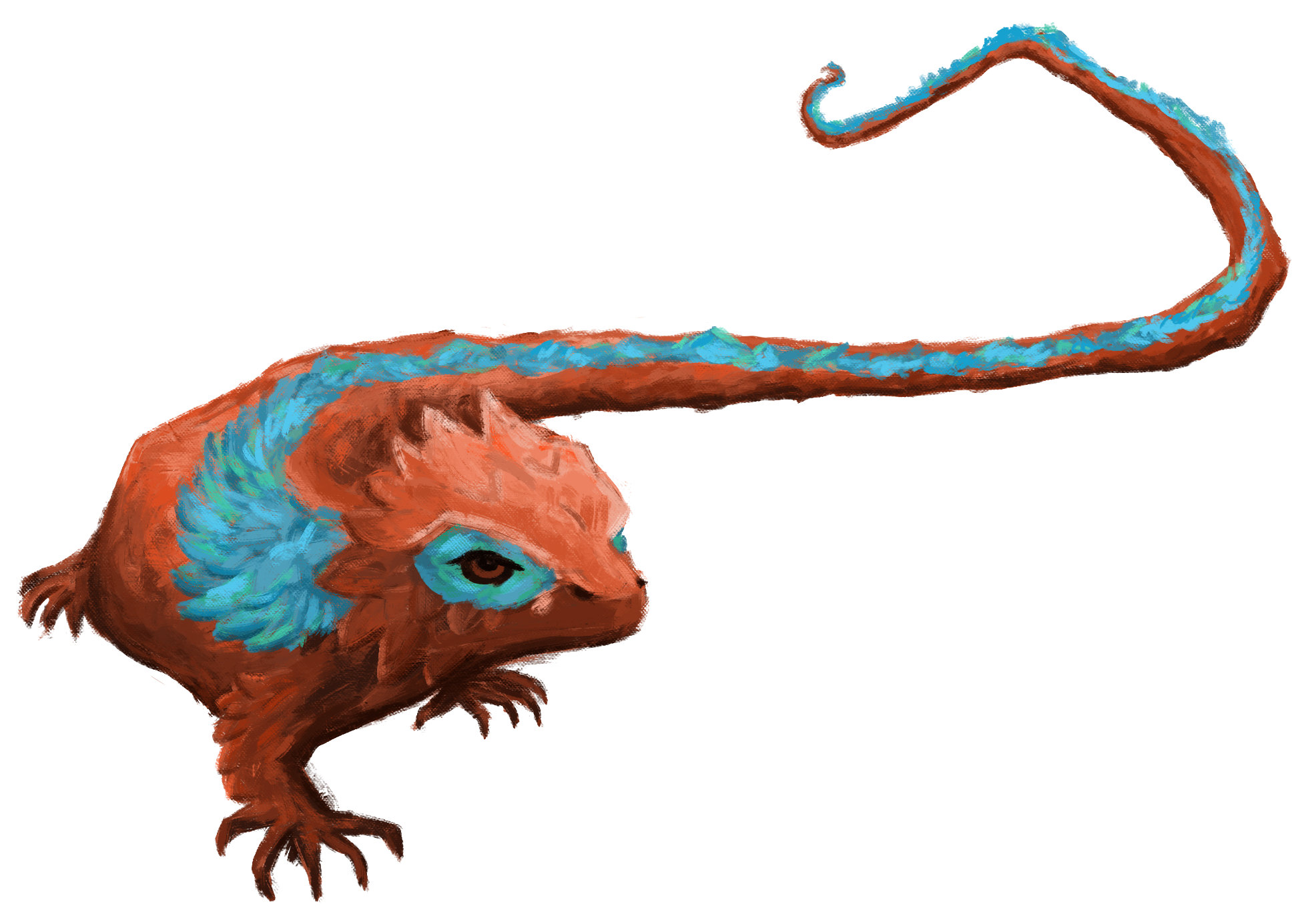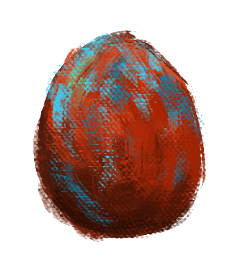The Nimble Nil
Nimble and swift, the Nil moves through the surroundings like the wind. Even though they are a relatively small creature their appetite is like no other. Hungry as fire and flames they can devour creatures 100 times their own size.
Anatomy and magic
Nil belongs to a group of creatures called Ewellions which is categorized as cold-blooded creatures with dragon-like features. Their skin is hard and protects them like a shield from harsh weather and other predators. Typically you find them filled with razor-sharp scales across their entire bodies which they use as weapons in combat and when they hunt, but some Nil loses them over-time for these very same reasons. Poisonous fluids run in their veins and if predators manage to penetrate their tough scaly skin, they almost certainly die from poison. People have reported being burnt by one of these creatures by touching their skin, and some claims magic is involved. Secrets of the sun have been learned by the cultures of Irai, but it has never been observed that an animal might be capable of understanding the sun-secrets. Other theories suggest that the burning touch to their skin might be a side-effect of their thick scales and how they almost “store” the heat from the sun in their bodies.Habitat
Living in the western regions of Kaïwan, the Nil prefers the hot and more dry climate. They are normally found around the very edge of the sandy dunes of Sölplanes. Many larger creatures live on the dunes and have acclimated to the scorching sun that burns the sand, though none of them can compete with the Nil and their ability to stay out in the blazing sun all day. Nil is excellent hunters even though their size tends to deceive observers and other creatures, and small as they are, they can go around almost undetected. Their movements are extremely fast even through the tough terrain of the dunes and they can run faster than any creature their size. Unlike many of the other Ewellions in the area, the Nil doesn't have to make holes and caves in the sand to escape the sun, and would rather be in the sun most of the day. The heat never gets to them, and the fluids in their systems don't evaporate in the blazing sun.Dunes of Sölplanes
Hot like a furnace, the sand can at times turn to glass as it melts in the sunlight. It's hard to believe that an ecosystem could exist in such a harsh area, but you would be surprised. Through centuries of evolution, plenty of different species roam the dunes and thrive in the warmth of the sun.Hunting and diet
Being picky is not something you would use to describe a Nil. They don’t care what’s on the menu and goes for whatever is in the area. Tough and strong, their strength can reach that of a small Dragon Ret - over 20 times larger than themselves. Excellent hunters, both in the light of day and in the darkness of night, they hunt everything and everyone. If they feel lazy, small bugs and other easy catches are what they’ll go for.Scientific name
Ewellinoises Nileis
Above is an illustration of a full-grown Nimble Nil.




